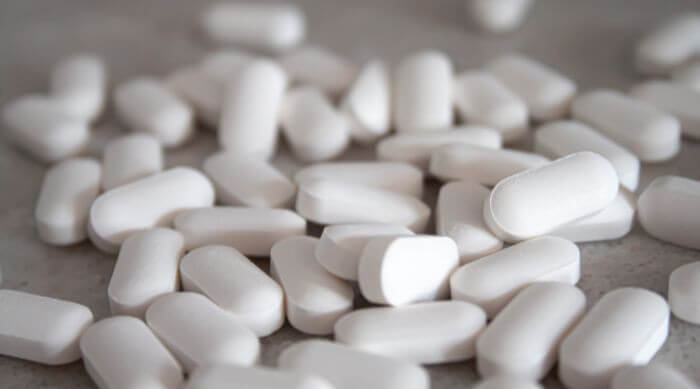Drinking a single alcoholic drink, like a glass of wine, and taking one dose of Tylenol (generic names acetaminophen or paracetamol) probably won’t cause negative impacts to your health.
But drinking multiple alcoholic beverages or alcohol abuse leading to alcohol addiction may be dangerous when combined with taking multiple doses of Tylenol. This is especially true if you take more than the recommended dose of Tylenol.
So, you've had a night of indulging in some fabulous rosé or a full-bodied red, and now you're hit with a throbbing headache or some other minor ailment. You might be asking yourself, "Is it safe to pop a Tylenol after all that vino?"
In short, yes, but with some caveats.
Table of Contents
Is it safe to take Tylenol after drinking alcohol?
Why You Shouldn't Mix Tylenol and a Lot of Alcoholic Beverages
Potential Side Effects of Drinking and Acetaminophen
How Long After Drinking Alcohol Can You Take Tylenol?
Why Am I Getting Headaches From Drinking Wine?
Is Tylenol Safe for People Recovering from Alcohol Use Disorders?
Is it safe to take Tylenol after drinking alcohol?
Acetaminophen, the active ingredient in brand-name Tylenol, can generally be taken after moderate alcohol consumption. Moderate drinking means no more than one standard drink per day for women or two per day for men:
- 5 ounces of wine (about a standard glass)
- 12 ounces of beer (your average bottle or can)
- 1.5 ounces of 80-proof spirits (that's one shot)
But it's not a green light to binge drink or ignore the dosage guidelines on your Tylenol bottle. Both alcohol and acetaminophen are processed in your liver, and overdoing either can increase your risk of liver disease or failure. Just like you love your liver, it loves moderation!
Moderation is crucial, whether you choose to drink occasionally or not at all.
How many Tylenol can I take with alcohol?
You can typically take a standard dose of Extra-Strength Tylenol (acetaminophen), which is no more than 3,000 mg per day after a night of moderate drinking.
The important thing to remember here is balance. If you're keeping your alcohol use within moderate limits and taking the highest recommended dose of acetaminophen (under 4,000 mg per day), then you should be in the clear. The risk of liver damage increases when you exceed these limits.
A small note: Tylenol’s maximum on-package dosage is 3,000 mg per day for Extra-Strength Tylenol. The highest “therapeutic dose” (as defined by scientific research) for acetaminophen is 4,000 mg per day. That’s why we define both numbers above.
What is the safest way to take Tylenol after wine?
The safest way to take Tylenol after wine is to take a standard dose (do not exceed the guidelines on the package) with a full glass of water. Avoid excessively drinking alcohol, and try to take Tylenol as little as you can to reduce your risk of liver damage.
Interestingly, the polyphenols (antioxidants) in wine may actually protect the liver from some damage caused by acetaminophen overdose. However, this research didn’t involve the use of alcohol and was only performed on animal subjects. (We think it’s just one more reason that non-alcoholic wine offers the best of both worlds!)
And remember, everyone is different. Factors like your general health, liver condition, and overall alcohol consumption can play a role. Those struggling with alcohol addiction should exercise extreme caution, stop drinking, and avoid acetaminophen altogether.
If you’re struggling with substance abuse or a substance use disorder, consult with an addiction treatment center for treatment options. When in doubt, check with your healthcare provider for more personalized medical advice.
Why You Shouldn't Mix Tylenol and a Lot of Alcoholic Beverages
Moderate drinking and taking the recommended dose of Tylenol is generally considered safe. However, exceeding moderate alcohol consumption or the recommended dosage of acetaminophen can increase the risk of liver damage when the two are combined.
Why is this combination potentially harmful? Acetaminophen alone can cause toxic damage to the liver known as acetaminophen-induced hepatotoxicity, the most common cause of acute liver failure in the U.S.
Genetics, health conditions, and medications used can also make someone more susceptible to liver injury. Beyond potential liver effects, combining alcohol and acetaminophen may impact mental health, causing drowsiness and confusion.
The bottom line? If you've had a few alcoholic drinks, it's wise to avoid acetaminophen. Opt for rest, hydration or non-acetaminophen alternatives when managing headaches. As always, consult your healthcare provider about your specific health profile. Being mindful of the interactions between alcohol and medications is crucial for wellbeing.
How the Liver Metabolizes Alcohol
Acetaminophen is metabolized in two ways. First, glucuronidation processes around 90% of the drug safely. Second, around 5-10% is broken down by the CYP2E1 liver enzyme, producing a toxic byproduct called NAPQI.
Normally, the antioxidant glutathione removes NAPQI before it damages the liver. However, alcohol increases CYP2E1 activity, resulting in more NAPQI production. Alcohol also decreases glutathione levels, allowing NAPQI to accumulate to toxic levels.
In other words, alcohol boosts the metabolism of acetaminophen into its toxic byproduct while also reducing the body's ability to safely remove this toxin. This one-two punch sets the stage for liver injury when acetaminophen and alcohol are combined, even in moderate amounts.
While acetaminophen tackles pain and fever effectively, taking more than the recommended amount along with alcohol use can lead to liver toxicity. Both alcohol and acetaminophen are processed by the liver, so overdoing either one raises the risk of liver damage.
Potential Side Effects of Drinking and Acetaminophen
Let's explore what can happen when you decide to mix that fine Merlot with a little too much Tylenol. Here's a list of side effects and health impacts that can occur from combining too much alcohol with too much acetaminophen:
- Liver Damage: Liver problems from alcohol abuse and taking Tylenol can range from inflammation, known as hepatitis, to more severe conditions like liver failure. Look out for symptoms of liver damage like yellowing of the skin.
- Increased Risk of Overdose: Too much acetaminophen and alcohol can mean a greater chance of accidentally overdosing, which can be life-threatening. If you think you’ve overdosed, seek immediate medical attention.
- Mental Health Impact: Drinking and Tylenol may cause you to feel drowsy or confused.
- Gastrointestinal Issues: Drinking too much alcohol can lead to ulcers and gastrointestinal bleeding, especially if you're also popping NSAIDs like ibuprofen.
- Kidney Damage: Beyond your liver, your kidneys could also be in for a rough ride, leading to potential kidney damage.
- Yellowing of the Skin: Jaundice, or yellowing of the skin, is a sign of serious liver damage. This can occur when the liver isn't able to effectively process bilirubin, a by-product of old blood cells.
Knowing these potential effects, it's clear that we should consider alternatives when we're in need of a pain reliever after drinking alcohol. How about trading that Tylenol for a glass of water or some rest?
Signs of Overdose
These are the potential signs of an overdose of Tylenol with alcohol:
- Stomach pain or loss of appetite
- Nausea or vomiting
- Sweating or fever
- Confusion or weakness
- Yellowing of your skin or eyes
- Dark urine
If you or someone else exhibits any of these symptoms, seek immediate medical help. Always err on the side of caution when it comes to your health and wellbeing. It's about being mindful of our actions and ensuring we treat our bodies with the respect and care they deserve.
How Long After Drinking Alcohol Can You Take Tylenol?
Medical advice generally suggests waiting at least 6 hours after drinking alcohol to take Tylenol. This time buffer is crucial because both alcohol and Tylenol are metabolized in the liver. Using them in close proximity could strain your liver and potentially cause harm.
Of course, every individual is unique, and factors such as weight, age, and the amount of alcohol consumed can influence the time alcohol stays in your system. Therefore, the six-hour waiting period is a general guideline and not a universally applicable rule.
If there's any uncertainty, it's always safer to wait longer. Check with your healthcare provider for guidance specific to your health profile.
Why Am I Getting Headaches From Drinking Wine?
If you've ever woken up with a nasty headache after a night of sipping vino, you're not alone. Here are a few reasons why wine may be giving you head pain:
- Tannins: The natural compounds in wine that give it structure and flavor can also trigger headaches in some people. Red wines are especially high in tannins.
- Sugar: Many wines have residual sugar left over after fermentation. The spike and crash of blood sugar levels can cause sugar headache symptoms. Sweet wines tend to have more residual sugar.
- Sulfites: These wine additives help preserve and stabilize wine. Sulfites may provoke headaches in sensitive individuals. They occur more in white wines than reds.
- Overconsumption: Drinking an excessive amount of wine can lead to dehydration and hangover headaches. If you find yourself with the “wine flu,” you may be dehydrated.
The good news? There are low-tannin, low-sugar, and low-sulfite wines that may help avoid "wine headache" pain. Or try switching to lighter, drier white wine varieties.
Stay hydrated while drinking, and be mindful of how much you consume in one setting. If headaches persist, consult your doctor and consider the benefits of not drinking. In moderation, it's possible to enjoy wine without the unwanted aftermath.
Read Next: Is Wine Paleo?
Alternatives to Tylenol
If you've had a bit too much alcohol and need a quick remedy for a headache but are concerned about combining it with Tylenol, several alternatives can be just as effective at providing relief.
These Tylenol alternatives may help reduce the amount of any one pain reliever/fever reducer you take, especially with frequent alcohol consumption:
- Ibuprofen (Advil, Motrin): Similar to Tylenol, it's best not to mix this NSAID with alcohol. If it's been several hours since your last drink, ibuprofen can be an effective choice.
- Naproxen (Aleve): Don't take it if you're still actively drinking alcohol. Naproxen is also an NSAID (nonsteroidal anti-inflammatory drug).
- Aspirin: This tried and true pain reliever can also serve as an alternative to Tylenol. But, again, it should not be mixed with alcohol.
- Natural remedies like hydrating, eating a snack, using a cold compress, or getting some sleep. These options are safe and don't carry the risks of mixing medications with alcohol.
Remember, everyone's body responds differently to various treatments. Always consult with a healthcare professional before starting or changing your regimen.
If you frequently need pain relief after drinking alcohol, it may be worth exploring your drinking habits or discussing them with your healthcare provider. Moderation and being mindful of potential alcohol and drug interactions is key for maintaining health.
Is Tylenol Safe for People Recovering from Alcohol Use Disorders?
Scientific research suggests it’s okay to take acetaminophen for at least two days in a row when detoxing from excessive alcohol consumption.
According to a high-quality human trial, people detoxing from alcohol received the maximum dose of acetaminophen (4,000 mg/day) for two days as their liver detoxed alcohol. No liver toxicity was found in any of the patients after this period of time.
However, if you’re still drinking alcohol and have alcohol use disorder (AUD), you’re more likely to experience liver damage than the average person if you also take more than the recommended dose of Tylenol.
Tylenol Is Safe When You Drink NA Wine
Looking to enjoy your favorite wines without the worries of mixing alcohol and medication? Surely non-alcoholic wine provides the perfect solution.
Surely uses a special de-alcoholization process that removes alcohol while maintaining the complex flavors and aromas of traditional wines. The result is delicious sparkling and still wines with less than 0.5% alcohol.
Sip a glass of Surely's alcohol-removed Pinot Noir, Chardonnay, Cabernet Sauvignon and more without concern for drug interactions. Their NA wines let you relax and unwind without reaching for painkillers later.
Check out the full selection of Sugar-free, Keto-friendly Surely wines to discover your new go-to drink when you want all the taste and none of the alcohol. Now you can say "Surely!" to great wine anytime.
Sources
- Protective effects of red wine polyphenols and grape-seed proanthocyanidin extract on acetaminophen-induced liver injury
- Acetaminophen-Induced Hepatotoxicity: a Comprehensive Update
- PharmGKB summary: Pathways of acetaminophen metabolism at the therapeutic versus toxic doses
- The role of alcohol consumption on acetaminophen induced liver injury: Implications from a mathematical model
- Ethanol and production of the hepatotoxic metabolite of acetaminophen in healthy adults
- Acetaminophen use in patients who drink alcohol: current study evidence
- Acetaminophen-Induced Hepatotoxicity: a Comprehensive Update






